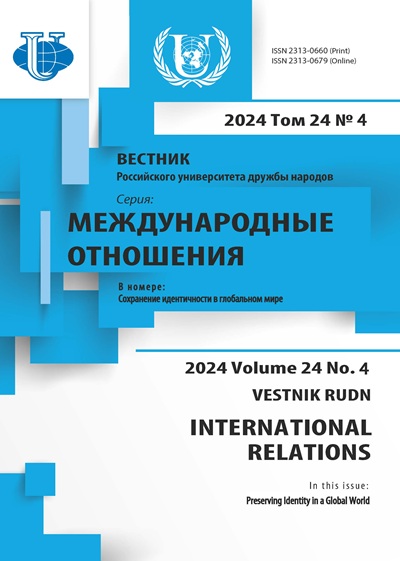详细
The article presents the findings of a study examining the implementation of the Kazakh historical policy in the socio-cultural space of the southern Russian borderland. Methodology of the study is based on concepts of the symbolic politics and the commemorative landscape of the borderlands. In the period from 1991 to 2020, the Kazakh authorities conducted an active historical policy in the Astrakhan region, which was reflected in several commemorative actions that received a loud public response. The analysis of the evolution of the Kazakh historical discourse in the period from the 1990s to the 2020s made it possible to reveal the multifaceted symbolic content of the historical policy of the Kazakh authorities projected on the Russian territory. The most significant action undertaken as part of this policy was the construction of the Bukey Khan mausoleum in Maly Aral, Astrakhan region, in 2011. The study revealed a number of symbolic objectives associated with this action: perpetuating the memory of Bukey Khan as one of the key heroes of the Kazakh pantheon of historical figures; hidden symbolic marking of that part of the Russian territory where the Bukey Khanate existed in the 19th century as Kazakh territory; symbolic confirmation of the legitimacy of the transfer to the Kazakh Soviet Socialist Republic (SSR) in the 1920s of part of the lands that were part of the Bukey Khanate; strengthening of the Kazakh identity among Kazakhs, Russian citizens living in the Astrakhan region; symbolic reformatting of the sacred space of the Karagash-Nogai people, formed around the grave of Saint Seid Baba, into the Kazakh historical and political memorial space. The ‘Kazakhization’ of this sacral complex became part of the historical policy pursued by the Kazakh authorities, which targeted the Russian Nogais. The history and culture of the Nogai people were of interest to the Kazakh authorities in the context of the struggle for the Golden Horde heritage. The symbolic “appropriation” of the Nogai historical and cultural heritage would allow closing the chronological, spatial and cultural gap in the historical and ideological construct of the “origin” of the Kazakh Khanate from the Golden Horde, since it was the Nogai Horde that was the only direct heir of the Golden Horde. Nogais also left behind a rich literary heritage in the form of epic tales, which later became widespread among Kazakhs. For symbolic “appropriation” of the Nogai heritage, a myth was created about the existence of a special period in Kazakh history, when in the Golden Horde there was allegedly a “Nogailin” (from the word “Nogaily” - Nogaian) ethnic community, which later disintegrated into the Nogai, Kazakhs and Karakalpaks. Currently, this myth is being actively replicated within the framework of the historical policy pursued by the Kazakh authorities.








